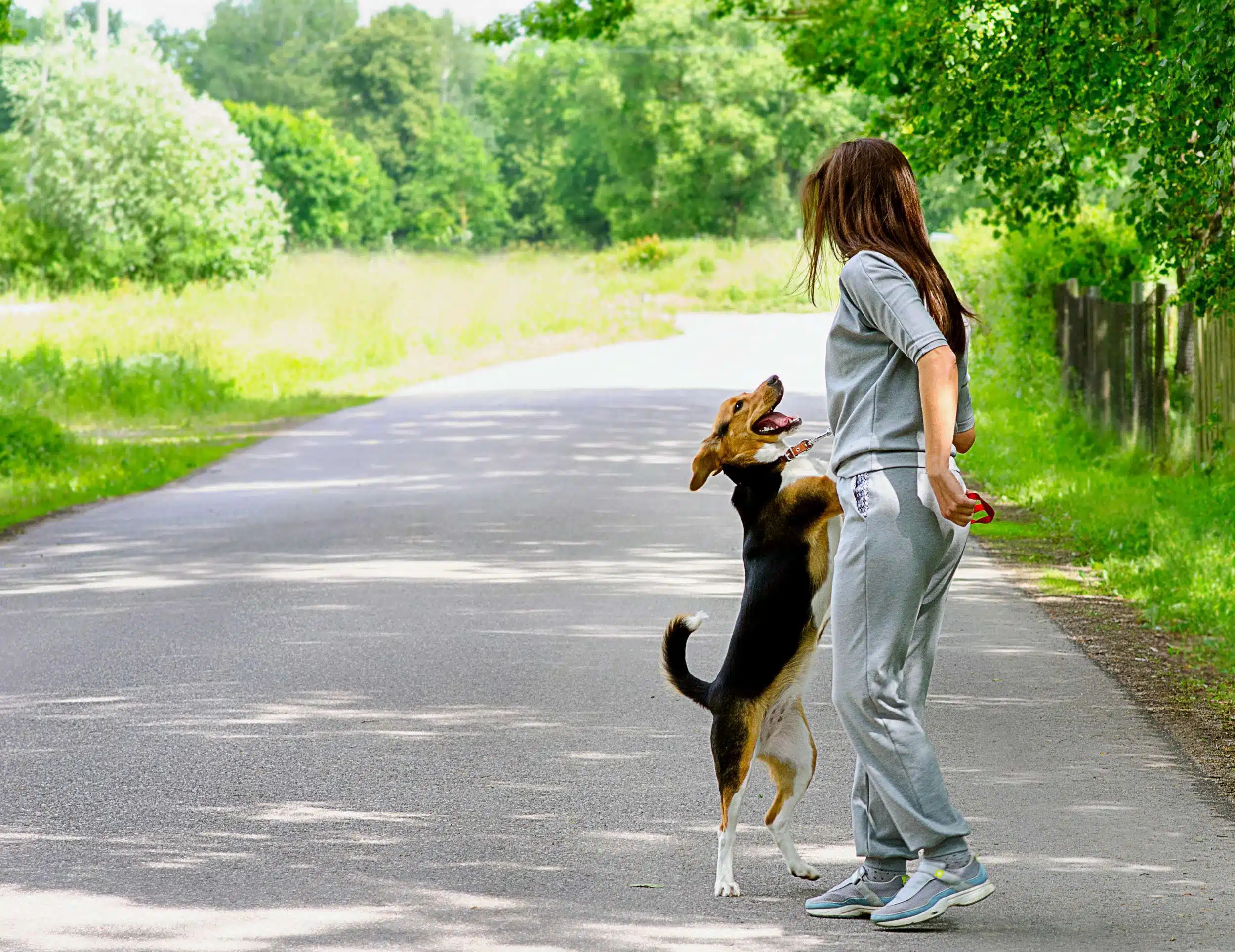What Are Purebred Dogs?
Part 1: Introduction
Purebred dogs play a significant role in the world of dog breeding. They are highly valued for their unique traits, predictable characteristics, and adherence to breed standards. Understanding what purebred dogs are is essential for both potential owners and enthusiasts who appreciate the distinct qualities of these breeds.
Purebred dogs have a rich history and have evolved through deliberate breeding practices over many generations. They have been selectively bred to maintain specific traits and appearances that are characteristic of their breed. This careful breeding has resulted in a wide variety of breeds with distinct physical features, temperaments, and abilities.
Part 2: Characteristics of Purebred Dogs
Purebred dogs exhibit distinctive physical traits and appearances that are inherent to their specific breed. These traits often adhere to breed standards, which are guidelines set by kennel clubs and breed organizations to define the ideal characteristics of each breed. The standards encompass various aspects such as size, coat color, texture, body structure, facial features, and more.
The breed standards play a significant role in maintaining breed integrity and preserving the unique qualities of purebred dogs. They serve as a benchmark for breeders to strive towards producing dogs that conform to the established norms. By using pedigree dogs and adhering to these standards, breeders can maintain consistency in the appearance and temperament of the breed, ensuring that each purebred dog is recognizable as a representative of its breed.
Distinguishing purebred dogs from mixed breeds can be a complex task. While mixed breed dogs have their own appeal and qualities, purebred dogs possess specific traits that set them apart. These traits are the result of generations of selective breeding, which has refined and consolidated certain characteristics within each breed. Purebred dogs tend to exhibit consistent behavior patterns, making it easier to predict their temperament, energy levels, trainability, and other aspects of their personality.
In the next section, we will explore the benefits and challenges associated with owning a purebred dog.
Note: For more information about specific dog breeds and their distinct characteristics, you can refer to the AKC Dog Breeds or Petfinder’s Purebred Dogs for Adoption resources.
Part 3: Benefits and Challenges of Owning a Purebred Dog
Owning a purebred dog comes with its own set of advantages and challenges. Let’s explore some of the benefits and considerations associated with purebred dogs:
Advantages of owning a purebred dog:
- Predictability in temperament and behavior: One of the significant advantages of purebred dogs is the predictability in their temperament and behavior. Due to generations of selective breeding, purebred dogs often exhibit consistent characteristics, making it easier for owners to anticipate their dog’s behavior and meet their specific needs.
- Specific qualities and skills: Each purebred dog breed possesses unique qualities and skills that have been carefully cultivated over time. Whether it’s a herding dog’s instinct to round up livestock or a retriever’s innate ability to retrieve objects, purebred dogs are bred for specific purposes, which can be advantageous for individuals seeking a dog with specific traits or abilities.
- Breed standards: Purebred dogs adhere to breed standards set by kennel clubs and breed organizations. These standards outline the ideal characteristics of each breed, including physical appearance, size, coat type, and more. By following these standards, breeders strive to maintain the integrity and distinctive qualities of the breed, ensuring that each purebred dog conforms to a recognized standard.
Challenges of owning a purebred dog:
- Potential health issues: While purebred dogs often possess desirable traits, certain breeds may be prone to specific health issues. For example, large breeds might be susceptible to joint problems, while brachycephalic breeds may experience respiratory difficulties. It is important for potential owners to be aware of the potential health risks associated with specific purebred breeds and take necessary precautions, such as choosing reputable breeders who prioritize health screenings and genetic testing.
- Higher acquisition and maintenance costs: Acquiring and maintaining a purebred dog can be more expensive compared to mixed breeds. The initial cost of purchasing a purebred puppy from a reputable breeder can be higher due to the careful breeding practices, health screenings, and pedigree documentation involved. Additionally, purebred dogs may require specialized care, grooming, and nutritional needs, which can contribute to ongoing maintenance costs.
Part 4: The Process of Breeding Purebred Dogs
Breeding purebred dogs involves a careful and methodical process that aims to maintain and improve the qualities and characteristics of specific breeds. Here is an overview of the key aspects of the breeding process:
Explanation of the breeding process for purebred dogs:
- Selecting parent dogs: The breeding process begins with the careful selection of parent dogs. Breeders consider various factors, including health, temperament, conformation to breed standards, and genetic diversity. Choosing suitable parent dogs is crucial to ensure the desired traits and characteristics are passed on to the offspring.
- Responsible breeding practices: Responsible breeders prioritize the welfare of the dogs and the preservation of breed integrity. They adhere to ethical practices such as providing a safe and nurturing environment for the dogs, promoting responsible ownership, and ensuring that the breeding dogs receive proper healthcare and nutrition.
- Health screenings and genetic testing: To minimize the risk of inherited diseases or conditions, responsible breeders conduct health screenings and genetic testing on the parent dogs. These tests help identify potential health issues and guide breeding decisions. Health screenings and genetic testing contribute to producing healthier offspring.
- Stud selection and mating: After careful consideration, the selected male (stud) is mated with the female (dam). The breeding is typically closely monitored and supervised by the breeder to ensure successful mating and to maximize the chances of a healthy pregnancy.
- Gestation and birth: During the gestation period, the dam undergoes pregnancy, typically lasting around 63 days. Breeders provide appropriate care and nutrition to support the dam’s health and the development of the puppies. When the time comes, the dam gives birth to a litter of puppies.
- Puppy care and socialization: Responsible breeders provide essential care for the puppies, including proper nutrition, vaccinations, and early socialization. This period is crucial for the puppies’ development and helps prepare them for their future homes.
Discussion of responsible breeding practices:
- Health screenings: Responsible breeders prioritize the health of their breeding dogs. They conduct various health screenings, such as hip and elbow evaluations, eye examinations, and genetic tests for known breed-specific conditions. These screenings help identify potential health risks and enable breeders to make informed decisions about which dogs to include in their breeding program.
- Genetic testing: Genetic testing is another important aspect of responsible breeding. It helps identify genetic markers for specific diseases or conditions, allowing breeders to avoid breeding dogs that may pass on these detrimental traits. Genetic testing is crucial for maintaining and improving the overall health and genetic diversity of purebred dogs.
- Ethical treatment of dogs: Responsible breeders prioritize the well-being and care of their dogs. They provide a clean and safe environment, regular veterinary care, and appropriate nutrition. They also ensure that the breeding dogs have a balanced and fulfilling life outside of breeding activities.
- Education and mentorship: Responsible breeders often participate in breed clubs and engage in ongoing education and mentorship programs. These resources help them stay updated on best practices, advancements in veterinary care, and developments in breed-specific knowledge.
Breed clubs and registries:
- Breed clubs: Breed clubs play a vital role in monitoring and promoting purebred dog breeding. They establish and maintain breed standards, organize events, and provide educational resources for breeders and enthusiasts. Breed clubs are dedicated to preserving the characteristics and integrity of specific breeds.
- Registries: Dog registries, such as the American Kennel Club (AKC) and the United Kennel Club (UKC), maintain pedigree databases and register purebred dogs. These registries ensure accurate documentation of bloodlines, pedigrees, and breed history. They also provide information and resources to breeders and owners.
By using purebred puppies, following responsible breeding practices and collaborating with breed clubs and registries, responsible breeders contribute to the preservation, improvement, and promotion of purebred dogs.
For more information about responsible breeding practices and breed clubs, you can refer to resources like the Canine Health Information Center (CHIC) or the websites of specific breed clubs and registries.
Part 5: Popular Purebred Dog Breeds
Purebred dogs encompass a wide range of breeds, each with its own distinct characteristics, history, and popularity among owners. The various kennel clubs have different group categories. Here, we will explore some of the most well-known and beloved purebred dog breeds, representing various groups:
Sporting Group:
- Labrador Retriever: Renowned for their friendly and outgoing nature, Labrador Retrievers are highly versatile dogs. They excel in various activities, including hunting, search and rescue, and as therapy dogs. Their intelligence and willingness to please make them popular family pets.
- Golden Retriever: With their gentle temperament and intelligence, Golden Retrievers are beloved companions and excellent service dogs. They are known for their patience, loyalty, and fondness for water activities.
Working Group:
- German Shepherd: German Shepherds are widely recognized for their loyalty, intelligence, and versatility. They often serve as police and military dogs, search and rescue dogs, and loyal family companions. Their exceptional trainability and protective instincts make them a popular choice for various roles.
- Boxer: Boxers are energetic and playful dogs known for their strong and muscular build. They are known to be excellent with children and possess a fun-loving and spirited personality. Boxers are often utilized as service dogs and excel in obedience and agility competitions.
Toy Group:
- Chihuahua: Chihuahuas are the smallest dog breed, known for their feisty and bold personality. They make excellent companions for individuals and families in small living spaces. Despite their tiny size, Chihuahuas have a big personality and are highly loyal to their owners.
- Pomeranian: Pomeranians are small, fluffy dogs known for their cheerful and extroverted nature. They thrive on human companionship and are often outgoing and confident. Pomeranians are popular for their vibrant coat colors and luxurious double coats.
Additional Breeds:
- Bulldog: Bulldogs are characterized by their distinct appearance, including a wrinkled face and a sturdy build. They have a calm and gentle temperament, making them excellent family pets. Bulldogs are known for their determination and loyalty.
- Dachshund: Dachshunds, also known as “wiener dogs,” are long-bodied and short-legged dogs. They come in different coat types and sizes, including standard, miniature, and toy. Dachshunds are playful, curious, and possess a fearless personality.
For more information about these breeds and other popular purebred dog breeds, you can refer to the AKC Dog Breeds or Petfinder’s Dog Breeds resources.
Part 6: Purebred Dogs vs. Mixed Breeds
When considering a dog, potential owners often weigh the differences between purebred dogs and mixed breed dogs. Let’s compare these two options:
Traits and Characteristics:
- Purebred Dogs: Purebred dogs are bred to conform to specific breed standards, resulting in more predictable traits and characteristics. These traits can include size, appearance, energy levels, and temperament. This predictability can be beneficial for individuals seeking specific qualities or working abilities in a dog.
- Mixed Breed Dogs: Mixed breed dogs, also known as mutts or designer dogs, are the offspring of two or more different breeds. Their traits and characteristics can vary widely and are often a blend of their parent breeds. This can result in unique appearances and temperaments that can be unpredictable but can also offer a wider range of traits and personalities.
Advantages and Disadvantages:
- Purebred Dogs: Advantages of owning a purebred dog include predictability in terms of temperament, appearance, and working abilities. Additionally, there is a wealth of knowledge and resources available for specific breeds, including training techniques, health concerns, and breed-specific activities. However, purebred dogs may be more prone to certain genetic health issues associated with their breed.
- Mixed Breed Dogs: Mixed breed dogs often possess a diverse genetic background, which can contribute to their overall health and vigor. They may be less prone to certain breed-specific health issues. Additionally, mixed breed dogs can have unique appearances and personalities. However, the variety in traits and characteristics can make it more challenging to predict specific behaviors or physical attributes.
Choosing a Dog:
When deciding between a purebred dog and a mixed breed puppy, it is crucial to consider personal preferences, lifestyle, and individual circumstances. Some factors to consider include:
- Temperament and Energy Levels: Assess whether the dog’s temperament and energy levels align with your lifestyle and activity levels.
- Training and Work Abilities: Determine if you require specific traits or working abilities in a dog, such as herding or retrieving skills.
- Health Considerations: Understand the potential health risks associated with certain breeds and mixed breed dogs.
Ultimately, theright pet choice depends on what qualities and characteristics align with your preferences and the dynamics of your household.
In the next section, we will address frequently asked questions related to purebred dogs to provide further clarity and guidance.
Part 7: Frequently Asked Questions (FAQs)
To provide further clarity and address common inquiries related to purebred dogs, here are answers to some frequently asked questions:
FAQ 1: What is the difference between a purebred dog and a mixed breed?
A purebred dog is one that belongs to a specific breed and has a documented pedigree, which confirms its lineage and adherence to the same breed and standards. On the other hand, a mixed breed dog, also known as a mutt, is the offspring of two or more different breeds. The main difference lies in their lineage and predictability of traits and characteristics. Purebred dogs have more predictable traits, while mixed breed dogs can have a diverse range of traits inherited from their parent breeds.
FAQ 2: Are purebred dogs healthier than mixed breeds?
The health of a dog depends on various factors, including genetics, breeding practices, and individual care. While purebred dogs may be more prone to certain breed-specific health issues due to genetic predispositions, responsible breeders strive to minimize these risks through health screenings and genetic testing. On the other hand, mixed breed dogs can benefit from genetic diversity, which may contribute to overall better health and reduced risk of breed-specific issues.
FAQ 3: How can I find a reputable breeder for a purebred dog?
Finding a reputable breeder is crucial to ensure you acquire a healthy and well-bred purebred dog. Here are some steps to consider:
- Research: Conduct thorough research to identify breeders who have a reputation for responsible breeding practices and adherence to breed standards.
- References and Recommendations: Seek recommendations from trusted sources, such as breed clubs, veterinarians, and experienced dog owners.
- Visit the Breeder: Schedule visits to the breeder’s facility or home to assess their breeding practices, the living conditions of the dogs, and their overall commitment to the well-being of the dogs.
- Ask Questions: Inquire about health screenings, genetic testing, socialization practices, and any specific concerns related to the breed.
- Contracts and Guarantees: Review any contracts or guarantees provided by the breeder, ensuring transparency and accountability.
FAQ 4: Can purebred dogs be adopted from shelters or rescues?
Yes, purebred dogs can be found in shelters and rescues. Many purebred dogs end up in shelters or rescues due to various circumstances, such as changes in their owners’ circumstances or breed-specific rescue organizations. It is recommended to check local shelters, breed-specific rescues, and online adoption platforms to find purebred dogs in need of homes and adopt them.
FAQ 5: Are all purebred dogs registered with breed clubs?
Not all breeders of purebred dogs are registered with breed clubs. Registration with breed clubs, such as the American Kennel Club (AKC) or other recognized kennel clubs, is voluntary. However, reputable breeders often register their purebred dogs to ensure accurate documentation of pedigrees and bloodlines. Registration provides access to various resources, events, and competitions organized by the breed clubs. There are even breeds considered purebred that are not recognized by the AKC.
Part 8: Conclusion
In conclusion, understanding what purebred dogs are and their characteristics is essential for potential owners, responsible breeder, and enthusiasts. Throughout this article, we explored the definition of purebred dogs, their distinct traits, the benefits and challenges of owning them, the breeding process, and frequently asked questions.
Responsible ownership and breed preservation are key considerations when it comes to purebred dogs. It is crucial to research and find reputable breeders who prioritize the health and well-being of their dogs. Furthermore, individuals should evaluate their own lifestyle, preferences, and capabilities when choosing a dog, whether it be a purebred or mixed breed.
Remember, the most important aspect is finding a dog that will be a loving companion and a suitable match for your family and lifestyle. Take the time to explore your options and make an informed decision that will bring joy and fulfillment to both you as parents and your new furry friend.














Get involved!
Comments